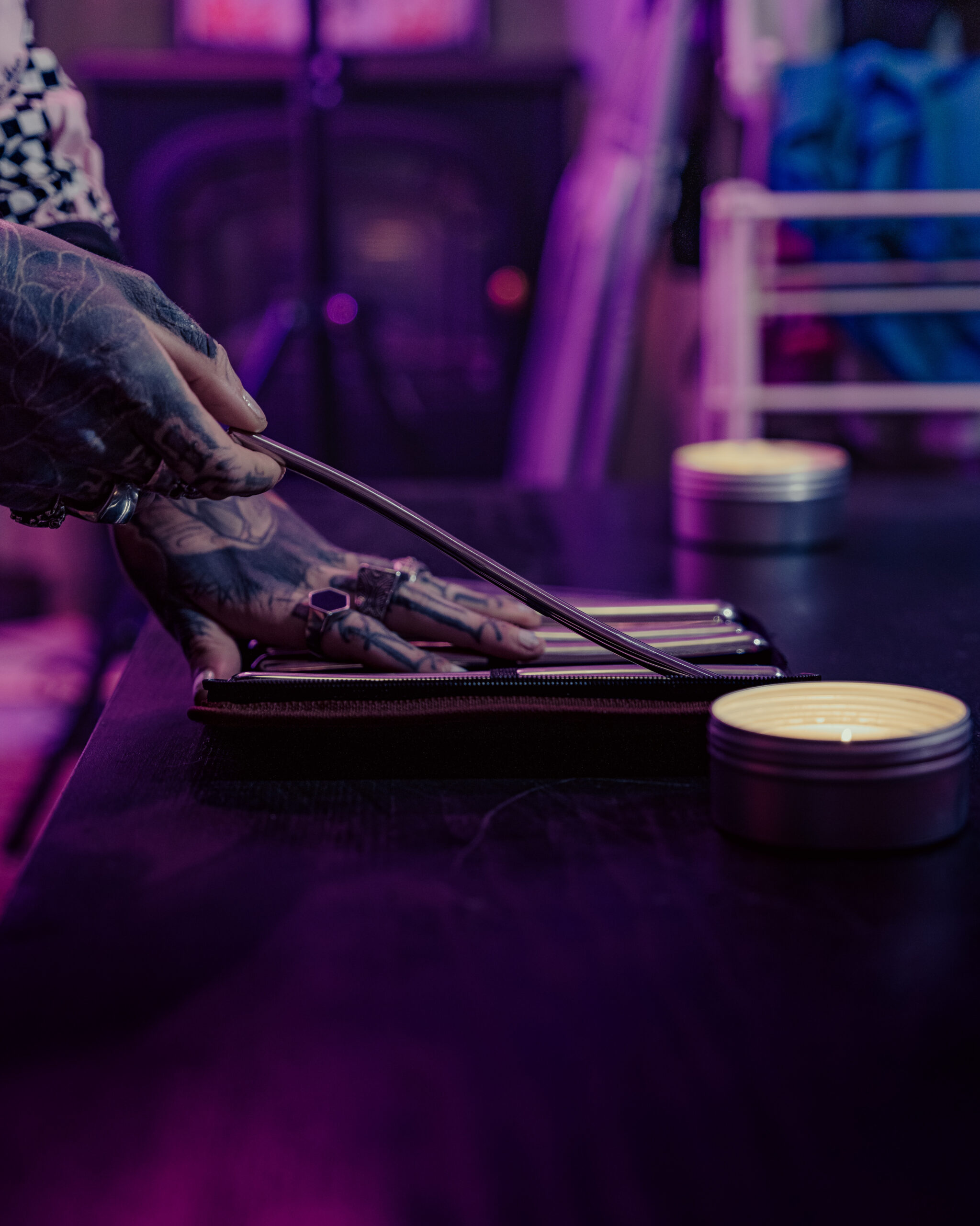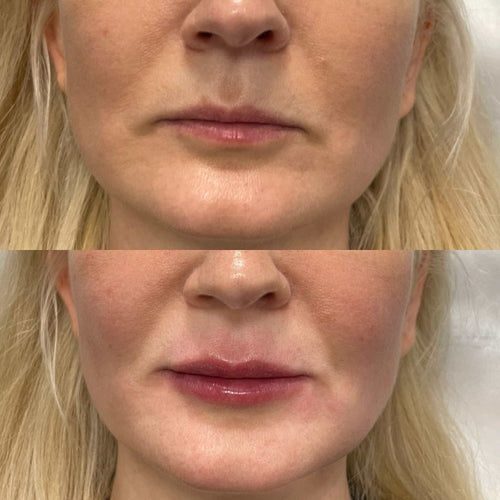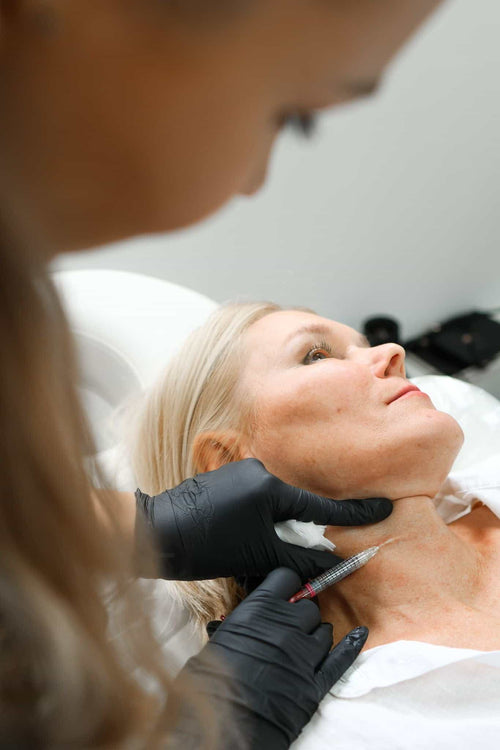May 18, 2025
What It Means To Identify As Graysexual In A Hyper-sexualized World
Understanding Graysexuality
Navigating sexuality in a world saturated with sexual expectations can be complex, and for some individuals, the traditional labels of “straight,” “gay,” or “bi” don’t quite fit. Graysexuality offers an alternative perspective, acknowledging that sexuality exists on a spectrum rather than in rigid categories. This exploration delves into what it means to identify as graysexual, shedding anal relaxer light on its nuances and challenges within a society often driven by hyper-sexualization.
Defining Graysexuality
Graysexuality is a sexual orientation characterized by fluidity and ambiguity regarding one’s attraction to others. Graysexual individuals may experience varying levels of sexual desire at different times or in different contexts, making it difficult to neatly categorize their sexuality as purely heterosexual, homosexual, bisexual, or asexual. Unlike asexual individuals who experience little to no sexual attraction, graysexual people can experience some degree of sexual interest but find that it fluctuates or is not a central aspect of their identity.
Living as a graysexual person in a world where sexuality is often hyper-sexualized presents unique challenges. Societal norms frequently pressure individuals to conform to binary understandings of attraction and engage in sexual activity. Graysexuality can feel isolating, as individuals may struggle to find accurate representation or understanding from others.
It’s important to recognize that graysexuality is a valid and diverse experience. Individuals who identify as graysexual may have different levels of comfort with physical intimacy, sexual expression, and relationship dynamics. Some may choose to engage in sexual activity, while others may prefer to abstain altogether.
Ultimately, understanding and embracing graysexuality requires recognizing the fluidity and complexity of human sexuality. It’s about allowing individuals the freedom to define their own experiences and express their desires authentically, regardless of societal expectations.
Spectrum of Sexual Attraction
Graysexuality offers a nuanced perspective on sexual attraction, recognizing that it exists on a spectrum rather than in rigid categories. It describes individuals who experience varying levels of sexual desire that fluctuate or are not a defining aspect of their identity. Unlike asexual individuals who experience little to no sexual attraction, graysexual people can feel some degree of sexual interest, but it’s not constant or always the primary driver in their interactions.
Navigating this identity in a society saturated with hyper-sexualization can be challenging. Societal norms often push for conformity to binary understandings of sexuality and pressure individuals towards certain behaviors. Graysexual individuals may feel misunderstood or isolated, struggling to find accurate representation and acceptance.
It’s crucial to remember that graysexuality is a valid and diverse experience. Individuals who identify as graysexual may have different levels of comfort with physical intimacy, sexual expression, and relationship dynamics. Some may choose to engage in sexual activity while others may prefer abstinence. The key is respecting individual choices and allowing people to define their own experiences authentically.
Embracing graysexuality means acknowledging the fluidity and complexity of human sexuality. It’s about creating a space where individuals feel comfortable exploring and expressing their desires without judgment or pressure to conform to societal expectations.
Challenging Binary Definitions
Graysexuality is a sexual orientation characterized by fluctuating levels of sexual attraction. Graysexual individuals experience some degree of sexual interest but find it varies in intensity over time or depending on the situation. This can make it difficult to fit neatly into traditional categories like heterosexual, homosexual, bisexual, or asexual.
Living as a graysexual person in a world dominated by hyper-sexualization presents unique challenges. Society often expects individuals to adhere to binary understandings of sexuality and engage in sexual activity. Graysexuality can feel isolating because finding accurate representation and understanding from others can be difficult.
It’s crucial to understand that graysexuality is valid and diverse. Individuals who identify as graysexual may have different levels of comfort with physical intimacy, sexual expression, and relationship dynamics. Some may choose to engage in sexual activity while others prefer abstinence. The key is respecting individual choices and allowing people to define their own experiences authentically.
Embracing graysexuality means acknowledging the fluidity and complexity of human sexuality. It’s about creating a space where individuals feel comfortable exploring and expressing their desires without judgment or pressure to conform to societal expectations.
Navigating a Hyper-Sexualized World
In a world saturated with sexual imagery and expectations, defining one’s sexuality can be complex. Graysexuality offers an alternative perspective, recognizing that attraction exists on a spectrum rather than in rigid categories.
This exploration delves into the nuances of graysexuality, examining its challenges and complexities within a society often driven by hyper-sexualization.
Media and Cultural Expectations

Graysexuality is a sexual orientation characterized by fluctuating levels of sexual attraction. Graysexual individuals experience some degree of sexual interest but find it varies in intensity over time or depending on the situation. This can make it difficult to fit neatly into traditional categories like heterosexual, homosexual, bisexual, or asexual.
Living as a graysexual person in a world dominated by hyper-sexualization presents unique challenges. Society often expects individuals to adhere to binary understandings of sexuality and engage in sexual activity. Graysexuality can feel isolating because finding accurate representation and understanding from others can be difficult.
It’s crucial to understand that graysexuality is valid and diverse. Individuals who identify as graysexual may have different levels of comfort with physical intimacy, sexual expression, and relationship dynamics. Some may choose to engage in sexual activity while others prefer abstinence. The key is respecting individual choices and allowing people to define their own experiences authentically.
Embracing graysexuality means acknowledging the fluidity and complexity of human sexuality. It’s about creating a space where individuals feel comfortable exploring and expressing their desires without judgment or pressure to conform to societal expectations.
In a world saturated with sexual imagery and expectations, defining one’s sexuality can be complex. Graysexuality offers an alternative perspective, recognizing that attraction exists on a spectrum rather than in rigid categories.
This exploration delves into the nuances of graysexuality, examining its challenges and complexities within a society often driven by hyper-sexualization.
Social Pressure and Conformity
Graysexuality is a sexual orientation characterized by fluctuating levels of sexual attraction. Graysexual individuals experience some degree of sexual interest but find it varies in intensity over time or depending on the situation. This can make it difficult to fit neatly into traditional categories like heterosexual, homosexual, bisexual, or asexual.
Living as a graysexual person in a world dominated by hyper-sexualization presents unique challenges. Society often expects individuals to adhere to binary understandings of sexuality and engage in sexual activity. Graysexuality can feel isolating because finding accurate representation and understanding from others can be difficult.
It’s crucial to understand that graysexuality is valid and diverse. Individuals who identify as graysexual may have different levels of comfort with physical intimacy, sexual expression, and relationship dynamics. Some may choose to engage in sexual activity while others prefer abstinence. The key is respecting individual choices and allowing people to define their own experiences authentically.
Embracing graysexuality means acknowledging the fluidity and complexity of human sexuality. It’s about creating a space where individuals feel comfortable exploring and expressing their desires without judgment or pressure to conform to societal expectations.
In a world saturated with sexual imagery and expectations, defining one’s sexuality can be complex. Graysexuality offers an alternative perspective, recognizing that attraction exists on a spectrum rather than in rigid categories.
This exploration delves into the nuances of graysexuality, examining its challenges and complexities within a society often driven by hyper-sexualization.
Internalized Biphobia and Homophobia
Graysexuality is a sexual orientation characterized by fluctuating levels of sexual attraction. Graysexual individuals experience some degree of sexual interest but find it varies in intensity over time or depending on the situation. This can make it difficult to fit neatly into traditional categories like heterosexual, homosexual, bisexual, or asexual.
Living as a graysexual person in a world dominated by hyper-sexualization presents unique challenges. Society often expects individuals to adhere to binary understandings of sexuality and engage in sexual activity. Graysexuality can feel isolating because finding accurate representation and understanding from others can be difficult.
It’s crucial to understand that graysexuality is valid and diverse. Individuals who identify as graysexual may have different levels of comfort with physical intimacy, sexual expression, and relationship dynamics. Some may choose to engage in sexual activity while others prefer abstinence. The key is respecting individual choices and allowing people to define their own experiences authentically.
Embracing graysexuality means acknowledging the fluidity and complexity of human sexuality. It’s about creating a space where individuals feel comfortable exploring and expressing their desires without judgment or pressure to conform to societal expectations.
In a world saturated with sexual imagery and expectations, defining one’s sexuality can be complex. Graysexuality offers an alternative perspective, recognizing that attraction exists on a spectrum rather than in rigid categories.
This exploration delves into the nuances of graysexuality, examining its challenges and complexities within a society often driven by hyper-sexualization.
Self-Acceptance and Expression
In a world saturated with sexual imagery and expectations, defining one’s sexuality can be complex. Graysexuality offers an alternative perspective, recognizing that attraction exists on a spectrum rather than in rigid categories. This exploration delves into the nuances of graysexuality, examining its challenges and complexities within a society often driven by hyper-sexualization.
Embracing Individual Experiences
In a world saturated with sexual imagery and expectations, defining one’s sexuality can be complex. Graysexuality offers an alternative perspective, recognizing that attraction exists on a spectrum rather than in rigid categories.
This exploration delves into the nuances of graysexuality, examining its challenges and complexities within a society often driven by hyper-sexualization.
Graysexuality is a sexual orientation characterized by fluctuating levels of sexual attraction. Graysexual individuals experience some degree of sexual interest but find it varies in intensity over time or depending on the situation. This can make it difficult to fit neatly into traditional categories like heterosexual, homosexual, bisexual, or asexual.
Living as a graysexual person in a world dominated by hyper-sexualization presents unique challenges. Society often expects individuals to adhere to binary understandings of sexuality and engage in sexual activity. Graysexuality can feel isolating because finding accurate representation and understanding from others can be difficult.
It’s crucial to understand that graysexuality is valid and diverse. Individuals who identify as graysexual may have different levels of comfort with physical intimacy, sexual expression, and relationship dynamics. Some may choose to engage in sexual activity while others prefer abstinence. The key is respecting individual choices and allowing people to define their own experiences authentically.
Embracing graysexuality means acknowledging the fluidity and complexity of human sexuality. It’s about creating a space where individuals feel comfortable exploring and expressing their desires without judgment or pressure to conform to societal expectations.
Communicating Needs and Boundaries
Graysexuality offers an alternative perspective on sexual attraction, recognizing that it exists on a spectrum rather than in rigid categories. Individuals who identify as graysexual may experience varying levels of sexual desire at different times or in different contexts. This can make it challenging to fit neatly into traditional labels like heterosexual, homosexual, bisexual, or asexual.
Living within a society saturated with hyper-sexualization presents unique challenges for graysexual individuals. Societal norms often pressure people to conform to binary understandings of sexuality and engage in sexual activity. Graysexuality can feel isolating as individuals may struggle to find accurate representation or understanding from others. It’s essential to remember that graysexuality is a valid and diverse experience.
Individuals who identify as graysexual may have different levels of comfort with physical intimacy, sexual expression, and relationship dynamics. Some may choose to engage in sexual activity, while others may prefer abstinence. The key lies in respecting individual choices and allowing people the freedom to define their own experiences authentically.
Embracing graysexuality means acknowledging the fluidity and complexity of human sexuality. It’s about creating a space where individuals feel comfortable exploring and expressing their desires without judgment or pressure to conform to societal expectations.

Finding Community and Support
Navigating sexuality in a world saturated with sexual expectations can be complex, and for some individuals, the traditional labels of “straight,” “gay,” or “bi” don’t quite fit. Graysexuality offers an alternative perspective, acknowledging that sexuality exists on a spectrum rather than in rigid categories. This exploration delves into what it means to identify as graysexual, shedding light on its nuances and challenges within a society often driven by hyper-sexualization.
Graysexuality is a sexual orientation characterized by fluidity and ambiguity regarding one’s attraction to others. Graysexual individuals may experience varying levels of sexual desire at different times or in different contexts, making it difficult to neatly categorize their sexuality as purely heterosexual, homosexual, bisexual, or asexual. Unlike asexual individuals who experience little to no sexual attraction, graysexual people can experience some degree of sexual interest but find that it fluctuates or is not a central aspect of their identity.
Living as a graysexual person in a world where sexuality is often hyper-sexualized presents unique challenges. Societal norms frequently pressure individuals to conform to binary understandings of attraction and engage in sexual activity. Graysexuality can feel isolating, as individuals may struggle to find accurate representation or understanding from others.
It’s important to recognize that graysexuality is a valid and diverse experience. Individuals who identify as graysexual may have different levels of comfort with physical intimacy, sexual expression, and relationship dynamics. Some may choose to engage in sexual activity, while others may prefer to abstain altogether.
Ultimately, understanding and embracing graysexuality requires recognizing the fluidity and complexity of human sexuality. It’s about allowing individuals the freedom to define their own experiences and express their desires authentically, regardless of societal expectations.
Graysexuality offers a nuanced perspective on sexual attraction, recognizing that it exists on a spectrum rather than in rigid categories. It describes individuals who experience varying levels of sexual desire that fluctuate or are not a defining aspect of their identity.
Navigating this identity in a society saturated with hyper-sexualization can be challenging. Societal norms often push for conformity to binary understandings of sexuality and pressure individuals towards certain behaviors. Graysexual individuals may feel misunderstood or isolated, struggling to find accurate representation and acceptance.
It’s crucial to remember that graysexuality is a valid and diverse experience. Individuals who identify as graysexual may have different levels of comfort with physical intimacy, sexual expression, and relationship dynamics. Some may choose to engage in sexual activity while others may prefer abstinence. The key is respecting individual choices and allowing people to define their own experiences authentically.
Embracing graysexuality means acknowledging the fluidity and complexity of human sexuality. It’s about creating a space where individuals feel comfortable exploring and expressing their desires without judgment or pressure to conform to societal expectations.
Building Healthy Relationships
Graysexuality offers a nuanced perspective on sexual attraction, recognizing that it exists on a spectrum rather than in rigid categories. It describes individuals who experience varying levels of sexual desire that fluctuate or are not a defining aspect of their identity.
Navigating this identity in a society saturated with hyper-sexualization can be challenging. Societal norms often push for conformity to binary understandings of sexuality and pressure individuals towards certain behaviors. Graysexual individuals may feel misunderstood or isolated, struggling to find accurate representation and acceptance.
It’s crucial to remember that graysexuality is a valid and diverse experience. Individuals who identify as graysexual may have different levels of comfort with physical intimacy, sexual expression, and relationship dynamics. Some may choose to engage in sexual activity while others may prefer abstinence. The key is respecting individual choices and allowing people to define their own experiences authentically.
Embracing graysexuality means acknowledging the fluidity and complexity of human sexuality. It’s about creating a space where individuals feel comfortable exploring and expressing their desires without judgment or pressure to conform to societal expectations.
Open Communication with Partners
Graysexuality is a sexual orientation characterized by fluctuating levels of sexual attraction. Graysexual individuals experience some degree of sexual interest but find it varies in intensity over time or depending on the situation. This can make it difficult to fit neatly into traditional categories like heterosexual, homosexual, bisexual, or asexual.
- Living as a graysexual person in a world dominated by hyper-sexualization presents unique challenges. Society often expects individuals to adhere to binary understandings of sexuality and engage in sexual activity. Graysexuality can feel isolating because finding accurate representation and understanding from others can be difficult.
- **It’s crucial to understand that graysexuality is valid and diverse. **Individuals who identify as graysexual may have different levels of comfort with physical intimacy, sexual expression, and relationship dynamics. Some may choose to engage in sexual activity while others prefer abstinence. The key is respecting individual choices and allowing people to define their own experiences authentically.
- Embracing graysexuality means acknowledging the fluidity and complexity of human sexuality. It’s about creating a space where individuals feel comfortable exploring and expressing their desires without judgment or pressure to conform to societal expectations.

Respecting Different Sexual Preferences
Building healthy relationships involves understanding, respecting, and accepting differences in sexual preferences and expressions. In a world that often pushes rigid norms, embracing the diversity of human sexuality is crucial for fostering genuine connection and intimacy.
Respecting different sexual preferences means acknowledging that individuals have the right to define their own desires and boundaries without judgment or pressure. This includes understanding that some people may be more sexually active than others, while others may prefer abstinence. It also involves recognizing that individuals’ comfort levels with different types of sexual activity can vary.
Open communication is essential for building healthy relationships based on mutual respect and understanding. Partners should feel safe to discuss their desires, boundaries, and expectations without fear of shame or rejection. Active listening and empathy are crucial for fostering a sense of trust and security within the relationship.
It’s important to remember that healthy sexuality is not about conforming to societal expectations or engaging in activities that make someone uncomfortable. Instead, it’s about finding what feels right and fulfilling for each individual, while respecting the preferences and boundaries of their partner.
Negotiating Consent and Expectations
Building healthy relationships involves open communication, respect for boundaries, and a willingness to understand different perspectives on sexuality. In a world that often pushes rigid norms, embracing the diversity of human experience is crucial for fostering genuine connection and intimacy.
When it comes to navigating sexuality within a relationship, clear and honest communication is paramount. This means being open about your own desires, limits, and comfort levels while also being attentive and receptive to your partner’s needs and preferences. It’s about creating a space where both individuals feel safe to express themselves authentically without fear of judgment or pressure.
Respecting boundaries is fundamental to healthy relationships. This involves recognizing that each individual has the right to define their own comfort zones regarding physical intimacy, sexual activity, and emotional expression. It’s essential to honor those boundaries and avoid pressuring your partner into anything they’re not comfortable with.
Remember, sexuality is a fluid and personal experience. What feels good and fulfilling for one person may not be the same for another. Embracing this diversity means being open-minded, curious, and willing to learn about your partner’s unique preferences and desires. It’s about finding what works best for both of you within the context of a loving and respectful relationship.
Goonie Yoga and Therapy
Glitz n Dirt


















